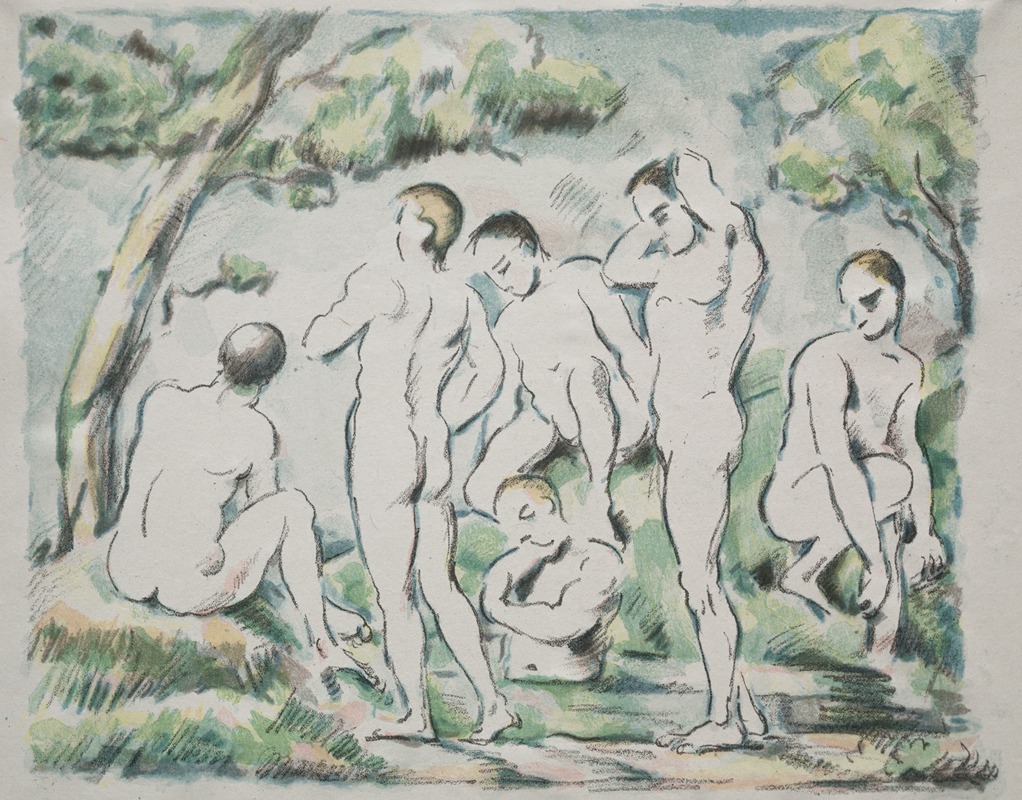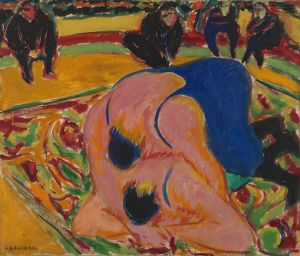
The Bathers
A hand-painted replica of Paul Cézanne’s masterpiece The Bathers, meticulously crafted by professional artists to capture the true essence of the original. Each piece is created with museum-quality canvas and rare mineral pigments, carefully painted by experienced artists with delicate brushstrokes and rich, layered colors to perfectly recreate the texture of the original artwork. Unlike machine-printed reproductions, this hand-painted version brings the painting to life, infused with the artist’s emotions and skill in every stroke. Whether for personal collection or home decoration, it instantly elevates the artistic atmosphere of any space.
"The Bathers" is a series of paintings by the French Post-Impressionist artist Paul Cézanne, created over a period of several years towards the end of his life. These works are considered some of Cézanne's most significant contributions to modern art and have had a profound influence on the development of 20th-century painting.
Cézanne's interest in the theme of bathers can be traced back to his early career, but it was during the last decade of his life that he focused intensely on this subject. The series includes several large-scale compositions, the most famous of which is "Les Grandes Baigneuses" (The Large Bathers), completed around 1906. This particular painting is housed in the Philadelphia Museum of Art and is celebrated for its monumental scale and innovative composition.
The Bathers series is characterized by Cézanne's distinctive approach to form and color. Unlike the more naturalistic depictions of the human figure by his predecessors, Cézanne's bathers are rendered with a sense of abstraction. The figures are often simplified into geometric shapes, and the boundaries between the figures and the landscape are blurred, creating a harmonious integration of the human form with nature. This approach reflects Cézanne's desire to capture the underlying structure of the natural world, a pursuit that would later influence artists such as Pablo Picasso and Henri Matisse.
Cézanne's use of color in the Bathers series is also noteworthy. He employed a palette of muted tones, with subtle variations in hue that create a sense of depth and volume. This technique, known as "passage," involves the gradual transition of color and tone across the canvas, contributing to the overall unity of the composition. Cézanne's innovative use of color and form in the Bathers series challenged traditional artistic conventions and paved the way for the development of Cubism and abstract art.
The Bathers series also reflects Cézanne's interest in classical art. The compositions often evoke the timeless quality of ancient Greek and Roman sculptures, with their emphasis on balance and proportion. However, Cézanne's bathers are not idealized figures; instead, they possess a raw, almost primitive quality that underscores the artist's exploration of the human condition.
Throughout his career, Cézanne was known for his reclusive nature and dedication to his craft. He worked slowly and methodically, often revisiting the same subject multiple times in his quest for perfection. The Bathers series is a testament to this meticulous approach, as Cézanne continually refined his technique and composition over the years.
In summary, Paul Cézanne's Bathers series represents a pivotal moment in the history of art. Through his innovative use of form and color, Cézanne challenged traditional artistic conventions and laid the groundwork for the development of modern art. His exploration of the relationship between the human figure and the natural world continues to inspire artists and captivate audiences to this day.


















